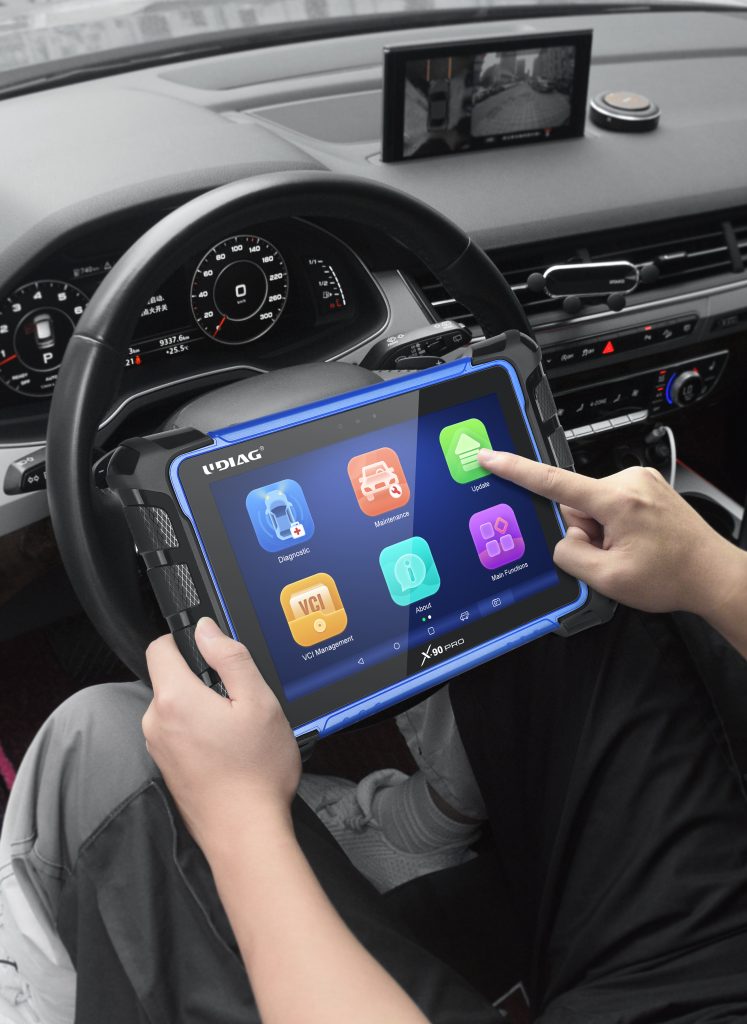Can an OBD-II scanner check my car’s battery health?
2025-01-03 by UDIAG
Introduction
In the realm of automotive diagnostics, On-Board Diagnostics II (OBD-II) scanners have become essential tools for both professional mechanics and car enthusiasts. These devices allow users to monitor various aspects of a vehicle’s performance, including engine health, emissions, and, importantly, battery status. Understanding the health of your car’s battery is crucial, as it directly impacts vehicle reliability and performance. This essay explores whether an OBD-II scanner can effectively check your car’s battery health, detailing its capabilities, usage, limitations, and the importance of regular monitoring.
I. Capabilities of OBD-II Scanners
OBD-II scanners are designed to interface with a vehicle’s onboard computer system. Their primary functions include reading diagnostic trouble codes (DTCs), monitoring sensor data, and providing real-time information about various vehicle systems. When it comes to battery health, OBD-II scanners can perform several essential tasks:
II. Basic Functions
One of the fundamental capabilities of OBD-II scanners is measuring battery voltage. By accessing the vehicle’s data stream, these scanners can provide readings that indicate whether the battery is functioning within acceptable parameters. Additionally, they can identify charging issues by monitoring the alternator’s output and ensuring that it is adequately charging the battery while the engine is running.
III. Advanced Features
More advanced OBD-II scanners may offer additional features that enhance battery diagnostics. Some models can provide detailed insights into cranking voltage—important for assessing the battery’s ability to start the engine—and charge status, which indicates how well the battery holds a charge over time.
IV. How to Use an OBD-II Scanner for Battery Health
Using an OBD-II scanner to check battery health is a straightforward process:
V. Finding the OBD-II Port
The first step is locating the OBD-II port, typically found under the dashboard near the steering wheel. This port allows you to connect your scanner directly to the vehicle’s computer system.
VI. Connecting the Scanner
Once you have located the port, connect your OBD-II scanner and power it on. Most scanners will automatically begin reading data from the vehicle. Navigate through the menu to find options related to battery diagnostics.
VII. Reading Voltage Levels
When checking battery health, focus on two key voltage readings:
- Resting Voltage: A healthy battery should show around 12.6 volts when the engine is off.
- Running Voltage: With the engine running, a well-functioning charging system should display a voltage between 13.7 and 14.7 volts.
VIII. Interpreting Results
Understanding the voltage readings from your OBD-II scanner is crucial for assessing battery health:
IX. Normal Voltage Ranges
As mentioned earlier, a resting voltage of about 12.6 volts indicates a fully charged battery. If readings fall below this threshold, it may suggest that the battery is undercharged or failing.
X. Potential Issues Indicated by Readings
Low voltage readings can indicate several issues:
- Undercharging: If the resting voltage is consistently low, it may point to problems with either the battery or charging system.
- Overcharging: Conversely, if running voltage exceeds 14.7 volts significantly, it could indicate that the alternator is overcharging, which can damage the battery.
If any readings are outside normal ranges, further investigation is warranted to prevent potential breakdowns.
XI. Limitations of OBD-II Scanners
While OBD-II scanners are valuable tools for monitoring battery health, they do have limitations:
XII. Basic vs. Advanced Scanners
Not all OBD-II scanners are created equal; basic models may only provide limited information regarding battery voltage without deeper diagnostics. Higher-end models may offer more comprehensive insights into battery performance but can be more expensive.
XIII. Comparison with Professional Testing Tools
For a thorough assessment of battery health—such as internal resistance and capacity estimates—professional testing tools are recommended. These tools can provide a more accurate picture of a battery’s condition than most consumer-grade OBD-II scanners.
XIV. Troubleshooting Tips
If your OBD-II scanner indicates low voltage or other issues with your battery:
- Clean Terminals: Corrosion on battery terminals can impede performance; cleaning them can improve connectivity.
- Check Connections: Ensure all connections are secure.
- Charge or Replace: If problems persist after cleaning and checking connections, consider charging or replacing the battery as needed.
Conclusion
In summary, an OBD-II scanner can be an effective tool for monitoring your car’s battery health by providing essential voltage readings and identifying potential issues with charging systems. Regular checks using an OBD-II scanner can help maintain vehicle reliability and prevent unexpected breakdowns. However, it’s important to recognize its limitations and consider professional testing for a comprehensive evaluation of your battery’s condition.
FAQs
1. Can an OBD-II scanner check my car’s battery health?
Yes, an OBD-II scanner can measure battery voltage and identify potential charging issues. It provides voltage readings that indicate whether the battery is functioning properly.
2. How do I check battery voltage with an OBD-II scanner?
To check battery voltage, connect the OBD-II scanner to your vehicle’s diagnostic port, typically located under the dashboard. Navigate to the battery or electrical system section in the scanner’s menu to view voltage readings, which should ideally be around 12.6 volts when the car is off and between 14-15 volts when running.
3. What should I do if my OBD-II scanner shows low voltage?
If your scanner indicates low voltage, first clean the battery terminals and check all connections. If the problem persists, charge the battery or consider replacing it if it does not hold a charge.
4. Will an OBD-II scanner read the battery light?
Yes, an OBD-II scanner can detect issues related to the battery light by pulling diagnostic trouble codes (DTCs) from the car’s system. This helps identify problems such as a weak battery or alternator failure.
5. Can an OBD-II scanner test an alternator?
Yes, an OBD-II scanner can test an alternator by monitoring voltage levels while the engine is running. It checks whether the alternator is charging the battery properly, with ideal output voltages ranging from 13.5 to 14.5 volts.
6. What are the limitations of using an OBD-II scanner for battery testing?
OBD-II scanners cannot perform load tests, which are crucial for accurately assessing a battery’s ability to deliver power under stress. They primarily provide voltage readings and may not give a complete picture of battery health.
7. Are all OBD-II scanners capable of checking battery health?
Not all OBD-II scanners have advanced features for detailed battery diagnostics; some only measure basic voltage levels. Higher-end models may offer more comprehensive insights into battery performance.



